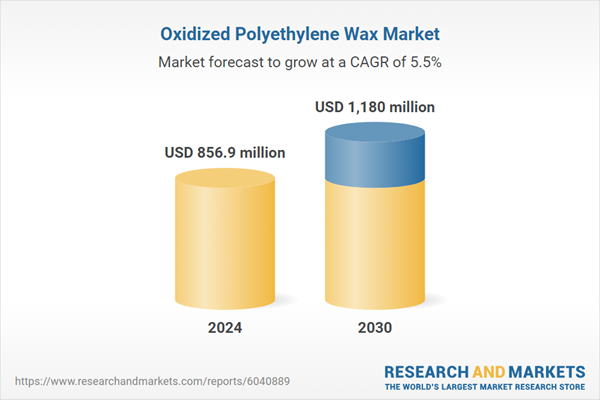Effects of polyethylene wax on the processability, structure, and mechanical properties of injection-molded industrial UHMWPE products
Ultra-high molecular weight polyethylene (UHMWPE) is a semi-crystalline polymer with an average molecular weight exceeding 106 g/mol, exhibiting outstanding mechanical properties and biocompatibility. As a result, it is widely used in transportation, construction, chemical and medical industries [[1], [2], [3], [4], [5], [6]]. However, the extremely high molecular weight of UHMWPE always leads to significant molecular chain entanglement, resulting in poor melt processability and limiting its wide applications [[7], [8], [9]]. UHMWPE is primarily processed using gel spinning, compression molding, and extrusion. However, these methods are often inadequate for producing precision components. For instance, products manufactured by extrusion and compression molding typically require additional post-processing, significantly extending the production cycle. Injection molding, with its ability to produce products with complex shapes and short production cycles, has been widely adopted in plastic processing. Currently, research on injection molding of pure UHMWPE and UHMWPE-based systems remains limited [10,11]. Traditional injection molding techniques and equipment struggle to address the challenge of UHMWPE's high melt viscosity, highlighting the urgent need for developing new injection molding technologies. Injection-compression molding, as a hybrid processing method, can effectively reduce molding pressure, improve shrinkage uniformity, and minimize residual stress, thereby enhancing product quality and production efficiency. However, this technique still faces challenges in overcoming the excessively high melt viscosity of UHMWPE. To enable injection molding of UHMWPE, a lot of attempts have focused on adding polymers with high flowability such as high-density polyethylene (HDPE), linear low-density polyethylene (LLDPE), and polyethylene wax (PEW) to improve the melt processability of UHMWPE [[12], [13], [14], [15], [16], [17]]. For example, HDPE can serve as a flow modifier for UHMWPE. However, HDPE chains are difficult to diffuse into the UHMWPE matrix using the conventional melt blending method, leading to phase separation [18]and compromising the mechanical properties of the product. Some studies have attempted to synthesize UHMWPE with low entanglement density before blending with HDPE, which promotes the formation of shish-kebab crystals from aligned UHMWPE chains, thereby enhancing mechanical properties. Although this approach mitigates the issue of poor chain diffusion, the process is too complex for large-scale production [[18], [19], [20]]. Enhancing chain diffusion remains a key consideration when selecting flow modifiers for UHMWPE. Chain diffusion is typically restricted by molecular chain entanglements, which are positively correlated with molecular weight. PEW, with its low molecular weight within the polyethylene family, exhibits strong chain diffusion capability. Thus, adding PEW could effectively reduce melt viscosity and facilitate the formation of an oriented structure in UHMWPE. Bakshi et al. [21] investigated the plasticizing effect of PEW on the UHMWPE matrix and found that PEW chains could diffuse into the amorphous regions of UHMWPE and disentangle molecular chains, enhancing the flowability of UHMWPE. Notably, although PEW significantly improves the flowability of UHMWPE, it inevitably impairs the mechanical properties. Thus, it is still challenging to improve the melt processability of UHMWPE by adding flow modifiers while maintaining its mechanical performance. With the advancement of microstructural research techniques, studies have shown that the oriented structure of long-chain UHMWPE polymers can significantly enhance the mechanical properties of the material. However, the high viscosity of UHMWPE makes it particularly challenging to construct an oriented structure. Therefore, developing high-performance UHMWPE products with oriented structures has become a hot research topic. In UHMWPE systems modified with PEW, the formation of shish-kebab crystals (which can enhance the mechanical properties of polyethylene) may significantly mitigate the mechanical performance loss caused by the addition of PEW and potentially improve the mechanical properties of UHMWPE products. In early research, Keller et al.[22 [][][]demonstrated through dilute solution theory that shish crystals require a strong flow field and a critical molecular weight exceeding the threshold predicted by the coil-stretch theory (CST). Due to the differences in fluid flow between melt and solution environments, the CST transition theory struggles to explain the formation mechanism of shish-kebab crystals under low strain or low-temperature conditions in some melt-processing scenarios. Based on the SNM theory proposed by Flory et al. [23], Li et al. [[24], [25], [26]] suggested that the nucleation of shish-kebab crystals arises from the stretching of an entangled network. The key point of this theory posits that shish crystals can form without the complete extension of molecular chains. Although the formation mechanism of shish crystals remains inconclusive, it is well demonstrated that shish-kebab crystals can only form under extensional or shear flow. A strong flow field is generated during the injection molding process, providing the necessary conditions for the formation of shish-kebab crystals. Previous studies have shown that adding low-molecular-weight polyethylene wax (PEW) to UHMWPE during compression molding can not only effectively reduce melt viscosity, but also promote molecular chain orientation and crystallization during stretching [27]. Based on this, introducing PEW into UHMWPE during injection molding is a feasible strategy to improve melt flowability. By thoroughly investigating the microstructural evolution of the UHMWPE/PEW system during injection molding and precisely controlling the processing parameters, it is possible to facilitate the formation of shish-kebab crystals, thereby enhancing the mechanical properties of the final injection-molded products. Scattering techniques are the primary methods for characterizing the hierarchical structure of semi-crystalline polymers such as polyethylene (PE). With advancements in synchrotron radiation technology, various crystallographic techniques have been developed, including in-situ wide-angle X-ray diffraction (WAXD), small-angle X-ray scattering (SAXS), ultra-small-angle X-ray scattering (USAXS), and small-angle neutron scattering (SANS). Significant progress has also been made in three-dimensional structural analysis [28,29]. Given the complexity of crystallization differences in various regions of injection-molded products, conventional offline WAXD/SAXS techniques, which typically have beam sizes ranging from tens to hundreds of micrometers, may fail to fully capture the crystallization characteristics of products, leading to the loss of critical structural information. Microbeam WAXD/SAXS, utilizing a multi-axis motorized sample stage with submicron precision, combined with an in-situ observation camera, enables precise positioning of the incident beam on the sample. The sample stage can be precisely controlled to move in steps as small as 10 μm, allowing for high-resolution scanning with a spatial resolution of 10 μm. This approach provides regional diffraction patterns, significantly enhancing the ability to reconstruct the microscopic structural variations across large areas of injection-molded products [30]. In this study, PEW was used as a flow modifier to achieve successful injection-compression molding of UHMWPE using a specialized injection molding machine. The structural characteristics of the injection-molded products were analyzed through Microbeam WAXD and SAXS, in combination with differential scanning calorimetry (DSC), scanning electron microscopy (SEM), and rheological testing. Additionally, the effects of varying PEW content and UHMWPE molecular weight on the crystallization behavior and mechanical properties of the injection-molded samples were systematically investigated.


